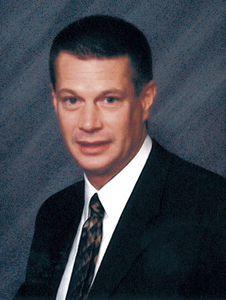YOU CAN CONTRIBUTE MORE TO YOUR RETIREMENT PLAN IN ’06
 If you have a 401(k) plan, you’ve got a great way to save for retirement. And, as of the first of the year, your 401(k) got even better – because you can now contribute even more to it. The same is true of 457(b) plans (if you work for a governmental agency) or 403(b) plans (if you work for a non-profit group). With all these plans, you can now put more in – which means that, someday, you should be able to take more out.
If you have a 401(k) plan, you’ve got a great way to save for retirement. And, as of the first of the year, your 401(k) got even better – because you can now contribute even more to it. The same is true of 457(b) plans (if you work for a governmental agency) or 403(b) plans (if you work for a non-profit group). With all these plans, you can now put more in – which means that, someday, you should be able to take more out.
In 2006, you can put in up to $15,000 to your 401(k), 403(b) or 457(b) plan, up from $14,000 in 2005. And if you are 50 or older, you can make additional “catch-up” contributions of $5,000 to your plan, giving you a ceiling of $20,000. (In 2005, the “catch-up” limit was $4,000.)
Furthermore, if you do participate in a 457(b) plan, and you are within three full calendar years of your normal retirement age, you may be able to contribute even more, sometimes up to double the limits. This means you may be able to put in up to $30,000 to your plan in 2006. You can’t take advantage of both the normal “catch-up” contribution and the double-contribution benefit in the same calendar year.
Of course, all the numbers we’ve mentioned thus far are sizable sums, and you might not think you can afford to reach whichever limit applies to you. Still, do whatever you can to boost your contributions to your employer-sponsored retirement plan, because you’d have a hard time finding a better way to save for retirement. First of all, your contributions are typically made with “pre-tax” dollars, so the more you put in, the lower your adjusted gross income will be. Also, your earnings grow on a tax-deferred basis.
If you can’t afford to “max out” on your retirement plan, at least put in enough to earn your employer’s match, if one is offered. And every time you get a raise in salary, increase your contributions.
Time to Rebalance?
While it is important to put in as much as you can afford to your 401(k) or other employer-sponsored plan, it’s just as essential to choose the right funding vehicles. Not that many years ago, employees only had a few options: a “growth” account, an “income” account, a “cash” account and, in some instances, an account containing company stock.
But now, you could have a dozen or more investment opportunities from which to choose. That’s a big responsibility – and it’s your responsibility. Your employer has some obligations to explain the various investment options offered in your plan, but you are ultimately the one who will need to pick the right investments to meet your retirement needs.
That’s why you will want to study your retirement plan holdings at least once a year with your qualified investment professional. Have you properly diversified your investment dollars? Are you investing either too aggressively or not aggressively enough? Have your retirement goals changed so much that you now need to make some significant changes to your portfolio? These are the questions you’ll need to ask yourself as you and your investment professional go over your plan.
So, while it’s still early in the year, review your plan and make whatever changes are necessary. You work hard for the money that you put into your retirement plan – so make sure the plan is working hard for you.
- Celebrating 20 Years Of Community At The Stand - April 12, 2024
- First Positive Case Of Chronic Wasting Disease In Indiana - April 12, 2024
- Southwest Allen County Schools Embark On Major Tree Plantings - April 12, 2024


